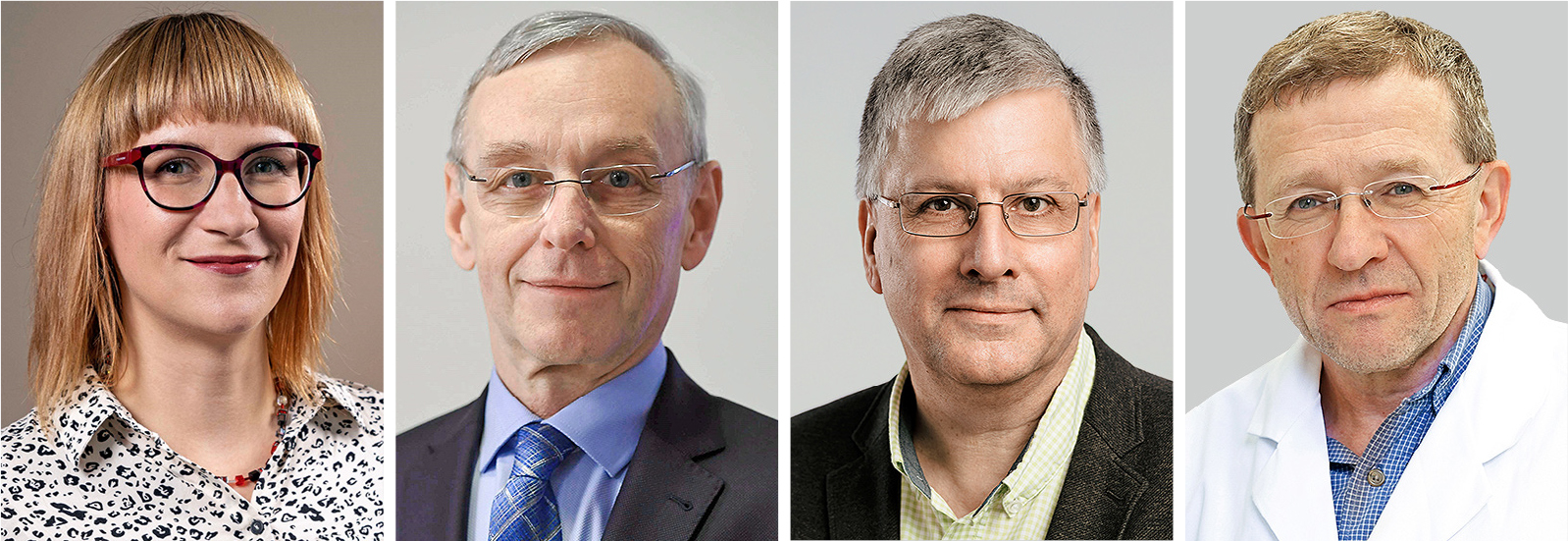EMBL-HCEMM Partnership Fostering Excellence in Science

From left: Karolina Pircs PhD, Prof. Lajos Kemény MD, Dr. Christoph W. Sensen, Vladimir Benes PhD.
In the dynamic world of molecular biology and scientific research, collaborations and partnerships have proven pivotal in advancing knowledge and discoveries. The European Molecular Biology Laboratory (EMBL), a cornerstone of scientific excellence in Europe, has helped create and is supporting the Hungarian Center of Excellence for Molecular Medicine (HCEMM), establishing a partnership that holds great promise for the future of life sciences in Central Europe.
This partnership, driven by a shared commitment to scientific excellence and innovation, not only enhances research capabilities but also strengthens the bonds of international cooperation. The Budapest Business Journal talks with several key figures in the partnership, shedding light on the benefits offered by the collaboration between EMBL and HCEMM.
Founded in 1974, EMBL is an intergovernmental organization supported by 28 countries, encompassing a diverse international community of around 2,000 staff over 95 nationalitites. With sites across Europe, EMBL is at the forefront of molecular biology research.
Its mission extends beyond conducting fundamental research to providing services to the scientific community, training the next generation of scientists, and promoting the integration of life sciences across Europe. EMBL’s interdisciplinary approach drives innovation and the development of cutting-edge technologies and methods in the field, with a strong emphasis on knowledge transfer for societal benefit.
“With this partnership in place, we have access to EMBL facilities and expertise at an unprecedented level. And that’s a very important point because, naturally, no one country has all the resources and infrastructure available at EMBL,” Christoph Sensen, director general and CEO of HCEMM, tells the Budapest Business Journal.
Set up following an EU “Teaming” grant back in 2016, the center quickly became one of the most important scientific institutions in Hungary. To take care of the administration of its program, HCEMM Kft. was incorporated by the Biological Research Center Szeged (BRC), the Semmelweis University in Budapest and the University of Szeged.
Critical Component
One of the critical components of the partnership between EMBL and a relatively new institution like HCEMM is the former’s extensive experience in nurturing a research culture of excellence, selecting and evaluating research groups, and building international networks.
The EMBL-HCEMM partnership offers a plethora of benefits to both institutions and their scientists. Vladimir Benes, head of the Genomics Core Facility at Heidelberg, emphasizes the essence of exchange in science. While EMBL’s diverse activities provide a remarkable platform for scientists to share ideas and collaborate, access to EMBL’s state-of-the-art infrastructure is another significant advantage, ensuring that HCEMM researchers have the tools they need to conduct cutting-edge research.
“Science is about exchange. That’s very important, certainly in natural sciences. The conferences and various training opportunitites have a very broad reach, so people across the world can get together. This also means that there is a large selection, a large catalog of people, scientists with different kinds of experience and skill sets,” Benes notes.
Stability in core funding and grants is a critical aspect of the partnership, as Lajos Kemény, group leader at the HCEMM-USZ Skin research group, notes. This stability offers many opportunities for collaboration, allowing scientists to conduct their own research and achieve their best performance. Of course, working together also opens up opportunities to gauge progress more accurately.
“We have learned how the EMBL
is working and how to strive for improved scientific output,” explains Kemény, who has been present in HCEMM since the beginning.
Karolina Pircs, who leads the HCEMM-SU Neurobiology and neurodegenerative diseases research group, highlights the invaluable support received from the EMBL Chemical Biology Core Facility by providing her group with more than 2,400 FDA-approved drugs. Moreover, the partnership facilitates easier communication and networking, a vital asset for busy group leaders.
“We have the possibility to visit all the EMBL sites and actually meet in person the group leaders that we really want to. I think networking and approaching people becomes a little bit easier this way, and I especially like the mixture between junior and senior people in the network,” she adds.
Visibility is Key
Science writer Márton Kuti, responsible for HCEMM’s social media communications, underscores the importance of public visibility. The center’s efforts in social media outreach have led to a substantial increase in followers on platforms like LinkedIn. Maintaining a balance between serious scientific communication and lighthearted engagement on platforms like Instagram and Facebook has proven to be an effective strategy, he says.
Sensen also underscores the significance of visibility, pointing to the success of HCEMM’s science café programs, which have been very successful, with more than 80 people attending one such event in Szeged.
Pircs notes that getting the information out is not only good for the visibility of HCEMM but also because it is essential to let the public know about the latest breakthroughs in research projects.
The partnership with EMBL has boosted visibility, as Benes explains. “With EMBL acting as an advanced partner, it is helping to get the news out there. The original Teaming grant program also had this in mind, really pushing forward and helping in increasing visibility on the scientific landscape in Europe.”
And what about the near future? Sensen notes that while EMBL is approaching the 50th anniversary of its establishment, HCEMM is a relative newcomer to the scene. However, over the last few years, the reputation of the center has been established, and already, thanks to a new EU grant call, it may have the opportunity to provide mentoring to other countries in the region if the upcoming application is successful.
WHAT IS HCEMM?
The Hungarian Center of Excellence for Molecular Medicine (HCEMM) is a distributed Institute, whose scientists develop advanced diagnostics and treatment options in support of healthy ageing. Currently, the HCEMM Program is funded by an H2020 Teaming Grant, where Semmelweis University, the University of Szeged and the Biological Research Centre in Szeged cooperate with their advanced partner EMBL (with headquarters in Heidelberg). The support of the Hungarian government is also essential for the operation of the HCEMM, primarily through the Thematic Excellence Programme and the National Laboratories Programme. HCEMM works at the interface of academic and industrial research on topics related to Translational Medicine. The goal is to improve the quality of life for an ageing Hungarian population, while at the same time lowering the cost of health care provision through novel applications in the field of Molecular Medicine. The coordination of the various activities is managed by HCEMM Nonprofit Kft., with headquarters in Szeged, Hungary.



This article was first published in the Budapest Business Journal print issue of October 20, 2023.
SUPPORT THE BUDAPEST BUSINESS JOURNAL
Producing journalism that is worthy of the name is a costly business. For 27 years, the publishers, editors and reporters of the Budapest Business Journal have striven to bring you business news that works, information that you can trust, that is factual, accurate and presented without fear or favor.
Newspaper organizations across the globe have struggled to find a business model that allows them to continue to excel, without compromising their ability to perform. Most recently, some have experimented with the idea of involving their most important stakeholders, their readers.
We would like to offer that same opportunity to our readers. We would like to invite you to help us deliver the quality business journalism you require. Hit our Support the BBJ button and you can choose the how much and how often you send us your contributions.


.png)








.png)
